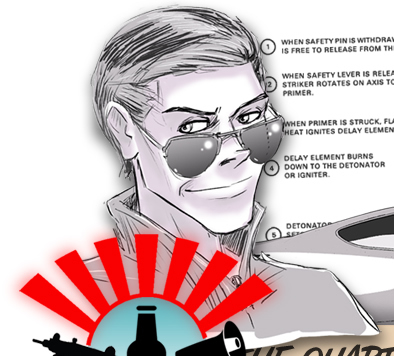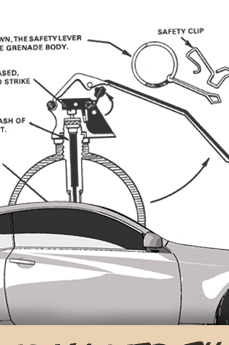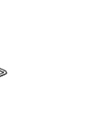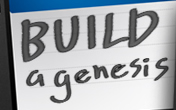This is going to essentially boil down to a pointers and lessons learned section. If you are having your engine built by any shop that has not built a Lambda II before, have them read this guide for your motor's safety, because there have been a more than a few nightmare moments for more than a few people discovering a number of the things detailed here. Cliff's Notes of stuff that has gone wrong, engines that have blown apart, decided life wasn't for them, etc. You will now have the privilege of learning from the mistakes or blind discoveries of others.
As a foreword if you are not familiar with the inner workings of an internal combustion motor - ergo you don't know what a main bearing is versus a rod bearing, stop reading now, and educate yourself before you get to the point where you seriously consider plunking down money to build your block.
Why Build my Block?
Firstly, remember your car's engine and it's rotating assemblies were machined, toleranced, and assembled by the lowest possible cost option Hyundai could find. In the case of most first generation BKs, the entire car was assembled at a factory in which Hyundai Mighty Diesel trucks were built; take that for what you will.
When a manufacturer (this goes for nearly all manufacturers of cars, with exception to high-end sports car houses of racing pedigree) builds a car for mass-consumption - even if it's a sports-oriented car, there is an acceptable loose-ness of tolerances within pretty much every assembly of the car, the engine is no exception. For instance; your Lambda II motor will have a given amount of acceptable crankshaft eccentricity, a given variation of weight & balance rod to rod, piston to piston, variances in bearing thicknesses, so on and so forth. What this means is your motor was built the best it needed to be to produce the power it was spec'd for at the factory, for 10yrs/100k miles, with a certain degree of reliability such that a warranty underwriter, well... underwrote the car.
So, when you buy any mass-produced car, and you start amping up the power, making it spin faster, advancing the timing, turning up the boost - you are taking all the rotating assemblies out of their acceptable design tolerance ranges.
In a nutshell, this means what is commonly referred to as your motor's "internals" - it's rods, pistons and crankshaft - (also referred to as "the bottom end of the block") now have an expiration date, as you've taken them out of their optimum range of operation. Ergo, the more power you add on top of stock output, the shorter the life of your motor's internals. Also, with a turbo car, the more you crank the boost up over stock, the closer you get to pushing the heads up and off the block, allowing oil and coolant to pass the head gasket and mingle with each other. This is a very bad thing.
With an engine block such as the Lambda II in which the crank mains are held by only two bolts, these bolts are prone to stretching and the mains prone to flexing under additional pressure, allowing crankwalk. Cranks should spin; not walk. Our engine block has another weak spot; the upper deck (where the heads mate to the block) is open. This means each cylinder's walls are free-standing within the engine block; they are not braced at the top against either side of the block walls. The only thing keeping them straight and preventing warpage under stress is their own structural integrity as a tubular structure (which isn't much) and the face of the cylinder heads bearing against the cylinder wall faces up top (which only goes so far), so if you slapped a big turbo on there and jacked up the power, your cylinder walls would literally begin to warp away from being straight up and down, and it doesnt take a PhD to figure out why that is a bad thing. Sleeving the motor solves this problem.
Therefore no matter how "strong" people claim their motor's OEM internals are, it's only a matter of time before the OEM balance & bearings job fails to withstand the extra punishment, and your machine will rapidly disassemble itself.
Longblock Engine Builds - Cash & Carry with a Shop
One way to build your block, rather than a la carte with a builder & shop(s) of your choice locally - if you are able to ship or are local to a builder that knows the Lambda II motor - is to simply write a shop a big fat check and leave them your car and/or engine. They call you back one day and you come pickup your newly pumped up machine, all retuned and everything, just drive away. Key word here is fat check, however with a known shop you get known and sometimes warranteed results. In the race engine building business NEVER EXPECT A WARRANTY. Warranties are rarely ever express or implied in this business for obvious reasons from almost any shop, so don't expect one.
There are very few engine builders who offer a built block package though one is in the process of working on the motors and a core exchange program:
Travis Buechler
Engine building & machining is a very well-known science and basically any engine builder/shop that has both experience doing engine work on Asian import cars, as well as a Hyundai 3.8L Shop Manual for your year of car - can do the job. There will, however, be a few points an engine builder new to this engine will need to know that he can't read in the shop manual. Those points, luckily for you, are in this guide.
From here on out is discussion of individual assemblies and components in building, from top to bottom, the entire motor, and a bag of chips.
Head/Upper End Components & Machining
We'll go top to bottom. For parts that don't have a link to a supplier, buy them from your reseller of choice. Your engine builder/shop is likely able to supply them as well. First up are your cylinder heads, and here's your grocery list -
- Port & Polish Head (No shops are currently known to offer a PnP program for the 3.8 heads though it should be fairly straight forward for most experienced shops)
Why do it: Porting & polishing your cylinder heads, as well as your intake manifold, will allow for best possible airflow & fuel atomization. All runners and ports match up perfectly, no bosses or casting marks are left anywhere, defects are machined out, surfaces are polished... it's expensive, but well worth it in terms of the engine's ability to be efficient and make power effectively. This process should also include machining the mating surface of the head for flatness to ensure 100% positive mating with the block.
- Cams (???)
Due to the Lambda II motor's cams varying in Hyundai Part # and fitment year-to-year and sometimes multiple parts per year (by VIN range even) make designing cams for this motor a virtual impossibility unless you are having a set of cams made to fit YOUR car and nobody else's; this will cost a mint and gain a marginal amount of power unless the car is using forced induction.
- Upsize Valves & Valve Seats/Higher end material components (inconel/copper alloy seats to handle higher stress & temps etc)
Why do it: Larger diameter valves & valve apertures in the head mean more air in faster, and more exhaust out faster; all good news to any turbo or supercharger you may have which wants to cram more boost into the motor. This is the sole domain of the man building your engine; do not attempt to specify and source your own valves. If you want to go upsize with your valves for truly big power, tell your builder before your head goes out for port & polish - the head will need to be machined to accept the new valves, and new valve seats must be installed as well to match.To allow for safe operation well above OEM redline - valve springs must also be upgraded for upsize huge power builds; lots and lots of extra boost means you run the risk of valve "float" - when your OEM valve springs are unable to keep the valves shut, and the pressure pushes them up and open at the wrong time. OEM springs on the Lambda II have been known secure to over 400whp but if even if you're sticking with OEM valves for your build, its something you should consider as a safety precaution if you can afford it.
- Head Studs
Why do it: Prevent your head from separating off the top of the block under high boost; this is cheap and easy, do it no matter what your build is aiming for. I can't find a listing of any off-the-shelf head studs for the Lambda II so you would do well to contact Travis Buechler and order directly from him.
- Thicker, Stronger Head Gaskets
Why do it: A thicker, heavier duty head gasket can lower compression ratio a tad, which allows for a smidge more boost in F/I applications- and also offer a stronger material gasket that is more durable under heavy abuse. Given that the OEM head gaskets on this car are for NA application they may not survive well in extended F/I use, but there is an aftermarket solution which if you contact Travis directly, he carries them on hand and ready to be shipped.
Block & Bottom End Components & Machining
Everything below the cylinder head. This is where you'll spend the bulk of your lunch money. With the build-up of any bottom end and lower rotating assembly to include the crankshaft, flywheel, pressure plate (clutch cover), rods, pistons, and fwd crank pulley - you must balance the entire assembly. If you do not have the entire lower rotating assembly balanced after building w/ all new components, you run the risk of grenading all your very expensive cool new hardware. Slapping all these performance internals into your engine without having everything balanced is like dropping a million dollars on the world's most awesome home theater system only to find it not only doesn't quite fit in your living room, but it sounds mediocre too.
- Machine Block Mating Surface for Flatness/Wire-Ringing
- Why do it: Ensure 100% positive mating with head surface for best possible seal. If you really want to go all out, ask your shop to precision machine the heads and block surfaces, sleeve it, and then wire-ring the cylinder mating surfaces. This is not cheap. You will no longer need head gaskets. Now you can go to meets with head gaskets hanging around your neck like Flava Flav's clock, proving to all the world just how badass you are because you are gasket-less, each cylinder sealed individually to the heads for maximum baller-ness.
- Closed-Deck Reinforced Cylinder Sleeves (If your looking for Open or Closed Decked Sleeves contact Travis Buechler directly. If your looking for Semi-Closed deck sleeves Contact Darton Sleeves)
Why do it: Closing the deck of the engine block & cylinder walls makes the motor quite literally bulletproof. You may now turn the boost up to numbers like 50psi without any worry of the cylinder walls deforming. Also, if a rod or piston fail during operation, simply disassemble the motor, pull out the sleeve that was damaged, slide in a new sleeve, go back to work. The machine labor to install these is not cheap, sleeving is not for the faint of heart. This is not a required upgrade unless you expect to exceed 500whp with your build. Though as with any build, sleeving will never hurt.
- Pistons
Why do it: Upgraded pistons are typically of a higher grade material, able to withstand more punishment, lighter weight, and better balanced in matching sets. Some brands like Mahle offer a recessed dish piston face that may offer better combustion characteristics and therefore better power; as with any engine internal component you get what you pay for. Spend as much as you can. You can buy OEM diameter pistons or go up a size; if your motor is extremely high mileage, you will have no choice but to upsize. If you are sleeving, go upsize for the simple fact that you will have to bore out the sleeves anyway, so you might as well go as big as possible. Larger cylinder volume means more room for more boost and more bang; its not a ton of add'l room, but its something. It is recommended you match your pistons to the same brand as your rods whenever possible.
- Connecting Rods
- Why do it: Rods are arguably one of the single greatest load-bearing components in the motor. The beefier these things are, the more bang your motor can sustain without bending or breaking anything. If you are going for a big build, pick from the usual suspect brands, Mahle, K1, Wiseco, JE, etc.
- Rod Bearings
- Why do it: Well, you have to, pretty much. Your OEM bearings are complete crap. Nothing off the-shelf exists specifically for the V6 but, Travis Buechler has them and can get them to you.
- Main Bearings & Thrust Bearings
- No performance aftermarket options are known to be available. OEM main bearings, when toleranced by a professional, appear to be acceptable.
- Main Studs
- Why do it: Your OEM main bolts will give up and run home to momma pretty quick if you start boost and going past 400whp. Nothing is currently on the shelf specific to the motor but speak with Travis Buechler as he has custom sets to made and can get them to you.
- Lightening the Crankshaft
- Why do it: The Lambda II's crankshaft is very heavy by sports car standards. The less mass that has to be spun around in the lower rotating assembly to allow power to go to the flywheel, the faster the motor will rev up and get into powerband; this also means it will drop revs more quickly and means you will have to be on the throttle more often to keep the thing spinning and making boost. Bear in mind however if your engine is able to spin up to redline way faster than the ECU is calibrated to catch it with over-rev safeties - you are going to spend a fortune building the motor and then blow it up on your first pass at the track. You also run the risk of fragging the motor as your valvetrain - if not fully upgraded to match your lighter crankshaft - may respond very poorly to the ridiculously fast spin-up, and throw chunks of solid metal places it's not supposed to go. Bottom line: For a street-driven car, even if you're a huge power build - leave your crank alone - just polish it up & knife edge it so it moves through the oil with low drag, don't try and lighten it, you can get yourself into alot of trouble lightening the crank too much.

































